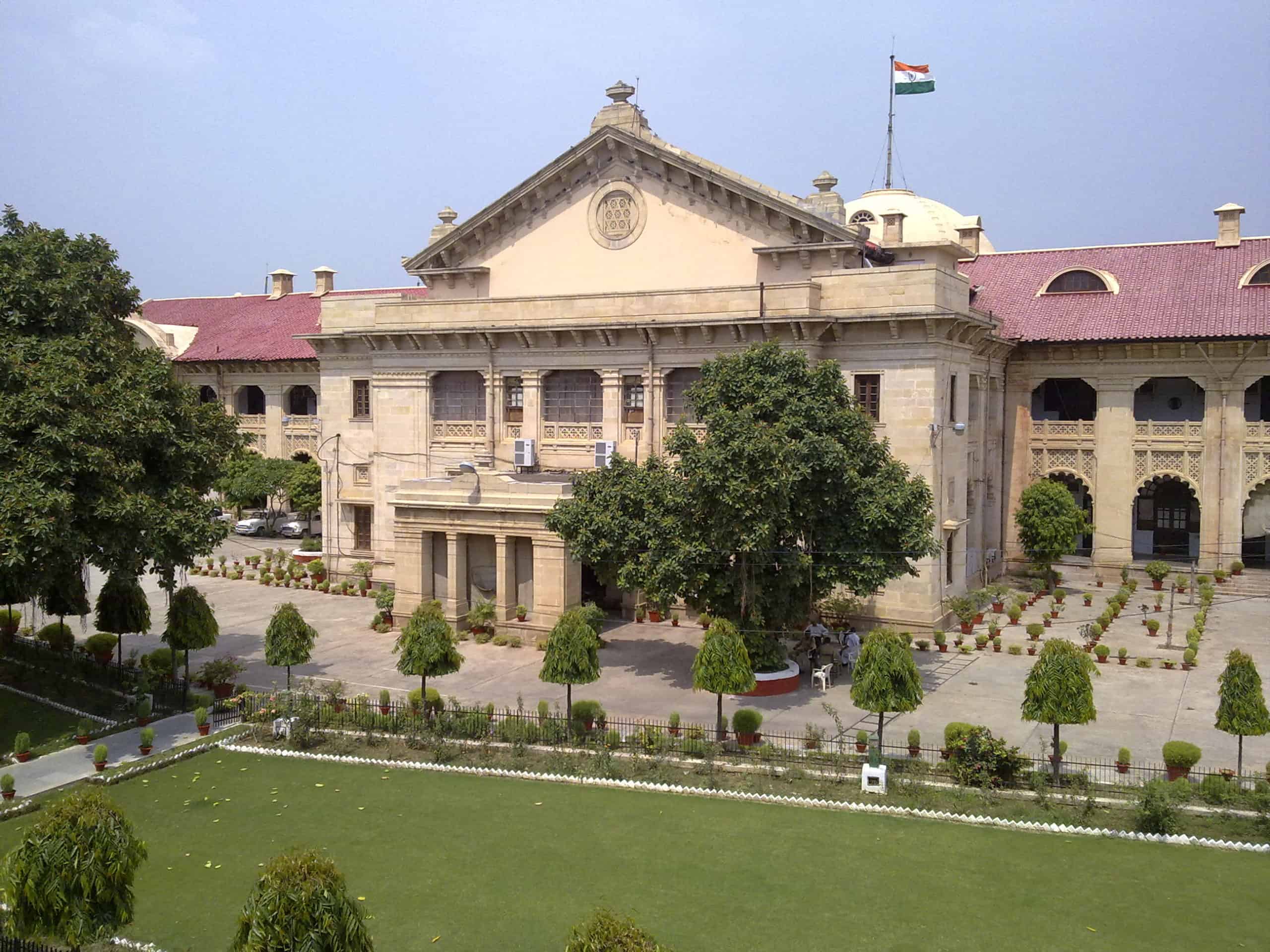It has been more than four decades since the Supreme Court set a legal milestone in the battle for protection of rights of Muslim women and dwelt on the need to implement a Uniform Civil Code (UCC) in the matter famously known as Shah Bano case.
Last week, the top court sought a reply from the Central government over religion-neutral inheritance and succession laws in India. Supreme Court lawyer and a member of the Bharatiya Janta Party (BJP), Ashwini Upadhyay, has succeeded in getting five such petitions admitted by the apex court that can be seen as a precursor to a UCC in the country.
What exactly is a Uniform Civil Code and why do the proceedings in the Supreme Court matter?
What is UCC?
UCC essentially refers to a common set of laws governing personal matters such as marriage, divorce, adoption, inheritance and succession for all citizens of the country, irrespective of religion. Currently, different laws regulate these aspects for adherents of different religions and a UCC is meant to do away with these inconsistent personal laws.
These laws include the Hindu Marriage Act, Hindu Succession Act, Indian Christian Marriages Act, Indian Divorce Act, Parsi Marriage and Divorce Act. However, Muslim personal laws are not codified and are based on their religious texts, though certain aspects of these are expressly recognised through laws such as the Shariat Application Act and Dissolution of Muslim Marriages Act.
What does the Constitution say about UCC?
Article 44 of the Constitution, which is one of the Directive Principles of State Policy, says: “The State shall endeavour to secure for the citizens a Uniform Civil Code throughout the territory of India.”
Directive Principles, as Article 37 makes clear, are not enforceable by any court but lays down at the same time that these are nevertheless fundamental in the governance of the country and it shall be the duty of the State to apply these principles in making laws.
A body of judicial precedents, including the famous Minerva Mills Case (1980), have held that the harmony and balance between Fundamental Rights and Directive Principles of State Policy was an essential feature of the basic structure of the Constitution. “The Indian Constitution is founded on the bedrock of the balance between the Fundamental Rights and the Directive Principles,” held this judgment. Similarly, in Dalmia Cement Case (1996), the apex court held that the preamble to the constitution, fundamental rights, and directive principles — the trinity — were the conscience of the Constitution. Several such judgments have maintained that directive principles were fundamental in the governance of the country, and the State shall strive towards fulfilling obligations laid therein.
How has the Supreme Court handled the issue of UCC?
Starting with its judgment in Shah Bano Case in 1985, the top court has dwelt on the UCC in several of its judgments. In many of these, the court favoured a common law for all citizens and reminded the Parliament of the spirit of Article 44. But the Supreme Court also remained mindful of its boundaries under the Constitution when it refrained from issuing any positive directive to the government in this regard, underlining that law-making is the exclusive right of the Parliament.
In Shah Bano case, the court had lamented: “It is a matter of regret that Article 44 has remained a dead letter… Common civil code will help the cause of national integration by removing desperate loyalties to laws, which have conflicting ideologies. No community is likely to bell the cat by making gratuitous concessions on this issue. It is for the State, which is charged with the duty of securing a uniform civil code and it has legislative competence to do so.”
Again, in Sarla Mudgal Case (1995), which dealt with issue of bigamy and conflict between the personal laws existing on matters of marriage, the court highlighted the need for a UCC yet again. The court underlined that until UCC was enacted for all the citizens of the country, there will be always a loophole because different faiths had different beliefs, and naturally due to different beliefs and practices of communities, there will be a conflict. It also requested the Prime Minister of India to have a fresh look at Article 44 and endeavour to secure for the citizens a UCC throughout the territory of India and wanted the court to be informed about the steps taken.
However, the Supreme Court’s subsequent orders in Ahmedabad Women Action Group case (1997) and Lily Thomas case (2000) clarified that no direction was issued to the government for enactment of UCC in the Sarla Mudgal case. But in John Vallamattom Case (2003), the court said that a common civil code will “help the cause of national integration by removing all contradictions based on ideologies”.
But 2015 witnessed the top court divided over the subject once again. In September-October 2015, the apex court revived the debate over the common law when it asked the Central government whether it was willing to bring UCC since there was, it said, “total confusion” over the incoherent stipulations about marriage, divorce, adoption, maintenance and inheritance among different religions.
In December 2015, however, another bench in the Supreme Court turned down a PIL for a UCC, saying the apex court’s observations for enacting a common law could only be in the “realm of hope and expectations” but a mandamus (directive) could not be issued to the government.
In 2019, the top court again expressed its disappointment over lack of UCC, saying: “Whereas the founders of the Constitution in Article 44 in Part IV dealing with the Directive Principles of State Policy had hoped and expected that the State shall endeavour to secure for the citizens a Uniform Civil Code throughout the territories of India, till date no action has been taken in this regard.”
How has the BJP-led government dealt with UCC?
The Bharatiya Janata Party considers the introduction of the UCC as a core ideological issue, and has, in the past, cited the example of Goa, which has a common law called the Goa Civil Code.
Narendra Modi, in an interview to Urdu weekly Nai Duniya published in May 2014, had acknowledged that the Constitution said the government will make efforts to implement UCC while adding that a common law did not mean thrusting of Hindu code on all citizens.
After coming to power, the Modi government did bring the debate to the fore. In a written reply to a question raised by Yogi Adityanath in Parliament in July 2014, Union law minister Ravi Shankar Prasad cited Article 44 of the Constitution and said that a wide consultation of stakeholders would be required for further steps in this regard.
In June 2016, the ministry of law and justice, made a reference to the Law Commission to examine all matters relating to the implementation of the UCC. The Law Commission, however, did not submit a final report on the issue and furnished a consultation paper on “Reform of Family Law” in August 2018.
This consultation paper stated that a Uniform Civil Code was “neither necessary nor desirable at this stage” and recommended that existing family laws across religions required to be amended and codified to tackle discrimination and inequality in personal laws. The consultation paper was one of the last reports submitted by the 21st Law Commission.
How have the petitions in the Supreme Court renewed the debate on UCC?
Beginning December 16, 2020, advocate Ashwini Upadhyay has succeeded in drawing the top court’s attention to as many as five petitions that pressed for uniformity in personal laws across various religions.
The first two petitions to be admitted by the Supreme Court on December 16 last year related to uniform grounds of divorce and uniformity in providing maintenance and alimony. Upadhyay’s petitions argued that divorce, maintenance and alimony laws in certain religions discriminated and marginalised women. These anomalies, varying from one religion to another, were violative of the right to equality (Article 14 of the Constitution) and right against discrimination (Article 15) on the basis of religion and gender and right to dignity.
On January 29, the top court also issued notice to the Central government on another PIL by Upadhyay, demanding uniform grounds of adoption and guardianship for all citizens throughout the country. His PIL complained that the current practice of adoption was blatantly discriminatory as Hindus have a codified law of adoption but Muslims, Christians, and Parsis did not have it.
Upadhyay’s another PIL seeking uniformity in age of marriage was also entertained by the apex court on February 2. The court had issued notice on his request to transfer petitions demanding uniform minimum age of marriage for men and women pending in the high courts of Delhi and Rajasthan to the top court to avoid multiplicity of litigation and conflicting views. Pointing out that more than 125 countries have a uniform age of marriage for men and women, Upadhyay urged the top court to declare 21 years to be the minimum age for marriage in India.
The latest one to be admitted by the Supreme Court pertains to uniform laws of succession and inheritance applicable across religious faiths. On March 10, the court issued notice to the Centre on another PIL by Upadhyay, who said uniform laws in succession and inheritance are necessary to secure justice, equality and dignity of women. This was the fifth PIL by Upadhyay entertained by the Supreme Court on uniform laws, and all these petitions have been clubbed together.
While the Central government is still to make its stand clear on these issues, what cannot be doubted is that by entertaining as many as five petitions, the Supreme Court is set to rekindle a debate yet again on a Uniform Civil Code in India.
Source Link




